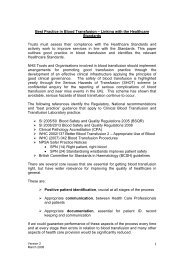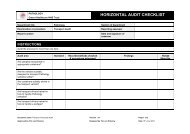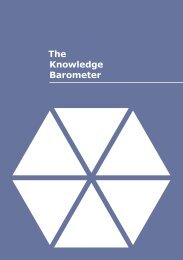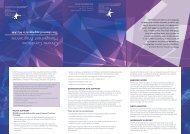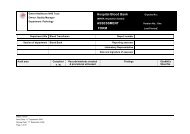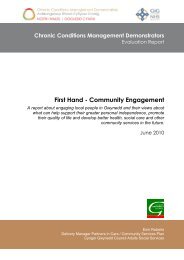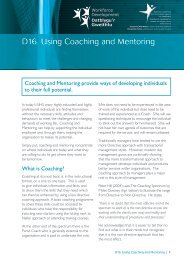Time-Driven Activity-Based Costing
Time-Driven Activity-Based Costing
Time-Driven Activity-Based Costing
Create successful ePaper yourself
Turn your PDF publications into a flip-book with our unique Google optimized e-Paper software.
The accuracy of the cost driver rates when they are derived from individuals’subjective estimates of their past or future behavior has also been called into question. 2Apart from the measurement error introduced by employees’ best attempts to recall theirtime allocations, the people supplying the data − anticipating how it might be used −might bias or distort their responses. As a result, operations, sales and marketingmanagers often argue about the accuracy of the model’s estimated costs and profitabilityrather than address how to improve the inefficient processes, unprofitable products andcustomers, and considerable excess capacity that the model has revealed. 3Another problem is that traditional ABC models are difficult to scale. Adding newactivities to the model, such as to introduce heterogeneity within an activity, requires reestimatingthe amount of cost that should be assigned to the new activity. For example,consider the complexity in the activity “ship order to customer.” Rather than assuming aconstant cost per order shipped, a company may wish to recognize the cost differenceswhen an order is shipped in a full truck, in a less than truckload (LTL) shipment, usingovernight express, or by a commercial carrier. In addition, the shipping order may beentered either manually or electronically, and it may require either a standard or anexpedited transaction. To allow for the significant variation in resources required by thedifferent shipping arrangements, new activities must be added to the model, therebyexpanding its complexity. 4As the activity dictionary expands – either to reflect more granularity and detailabout activities performed or to expand the scope of the model to the entire enterprise −the demands on the computer model used to store and process the data escalatedramatically. For example, a company using 150 activities in its enterprise ABC model,and applying the costs in these 150 activities to 600,000 cost objects (products or SKUs,and customers), and running the model monthly for two years requires data estimates,calculations, and storage for more than 2 billion items. 5Such expansion has caused many home grown ABC systems to exceed thecapacity of their generic spreadsheet tools, such as Microsoft Excel ®, or even theirformal ABC software packages, such as ABC Technology’s Oros® . The systems oftentake days to process one month of data, assuming the solution converges at all. Forexample, the automated ABC model for Hendee Enterprises, a $12 million fabricator ofawnings, took three days to calculate costs for its 40 departments, 150 activities, 10,000orders, and 45,000 line items. 6To reduce the computational and storage burden of operating an enterprise-wideABC model, companies often build separate ABC models for each of their sites. But thenthe models do not easily handle products that move between facilities for processing. Forexample, at a steel fabricator and distributor, one particular grade of steel is processedthrough three different facilities before shipment to the customer. Trying to coordinatecost estimates for products traversing multiple ABC models, or for a product assembledfrom components built in separate factories, each with its own ABC model, becomes anessentially impossible task.4




